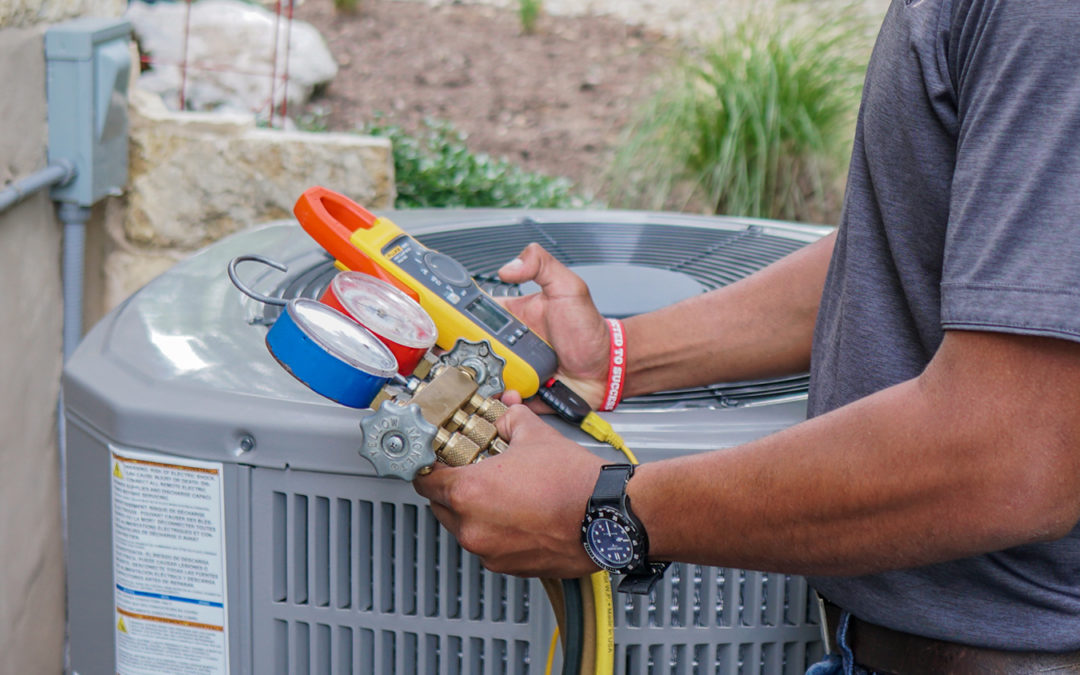See Updated Refrigerant Information For 2025
The R-22 Ban in HVAC
R-22 is officially banned. What does this mean for you as a homeowner? Well, if your AC unit has R-22, you have to throw it in the trash. Just kidding!
In all seriousness, you’re likely wondering, what is R-22? Why is it banned? How do I know if my unit uses R-22? What are my options if I do have a unit with R-22?
R-22 and its impact on the environment
The production of air conditioners has used R-22 which is a refrigerant also known as HCFC-22 or freon for decades. In the seventies, scientists realized that CFCs and HCFCs like R-22 deplete the ozone layer. Therefore the EPA phased out R-22 based on new regulations. In 2010 manufacturers were required to discontinue producing new units with R-22. Effective January 1, 2020, the United States was no longer be able to produce or import R-22.
If your air conditioner is older than 10 years old there is a good chance it uses R-22. As a result of the ban, R-22 supplies will drastically be reduced, which inevitably will result in higher repair costs for older air conditioning units using the R-22 refrigerant. Subsequently, it will become cost-prohibitive for home and business owners to repair a system that may be leaking R-22. Your old R-22 air conditioner can no longer be repaired if your service company can’t get R-22 due to the R-22 ban. Before long you’ll be forced to replace any R-22 air conditioners you have.
Options if your system runs on R-22
Option one: Disappoint Greta
Do nothing until your unit fails. If you have an R-22 compatible system you are not required to stop using R-22 air conditioners nor to replace existing equipment. If you currently have an R-22 system it would be a very good idea to have regular maintenance done to extend the life of your air conditioner as long as possible. Regular cleaning and maintenance will make your air conditioner run more efficiently and technicians can identify and repair minor issues before they cause breakdowns. If you have had to have your R-22 system recharged in the past due to a leak it’s a good idea to at least start planning ahead and budgeting for a new system in the near future.
Option two: Make Greta awkwardly content
Retrofit your old R-22 system to use an existing refrigerant. Retrofitting is not technically feasible for every system. You’ll need an inspection of your equipment to determine if it might work for you. Converting an R-22 system to use R-410A, a safer material that is the current, compliant standard can’t be done without making major changes to the entire system. In the case of HVAC systems, this conversion requires at minimum replacement of the R-22 compressor, evaporator, and condenser with new units designed to run R-410A. The cost of retrofitting an R-22 system versus buying a new system doesn’t always make sense in most cases.
Option three: Make Greta happy
Proactively replace your R-22 system. This option is dependent on your answers to the following questions: How tolerant are you of high temperatures without having the AC running? If you have a breakdown and R-22 is needed and not available for your repair, you will likely have a longer repair wait, and higher cost if your system breaks down in the Texas heat.
What is the current life expectancy for your existing unit? If your unit has less than a year, we’d suggest getting your AC replacement done before the Texas summer hits.
How badly do you want to save the environment? While replacing your AC unit for one that is more energy-efficient and uses an environmentally friendly refrigerant will not change the entire state of the current environment, it will change the part of the environment that you touch in your daily life.
How Altruistic can help with the R-22 ban HVAC
Above all, no matter which option is best for you, or even if you’re unsure if you have an R-22 system, reach out to us. We’re available via phone, email, or text! We can do a complete assessment of your needs and go over options to meet your needs and budget.

